I have a temperature dataset of 427 days(daily temperature data) I am training the ARIMA model for 360 days and trying to predict the rest of the 67 days data and comparing the results. While fitting the model in test data I am just getting a straight line as predictions, Am i doing something wrong? `
from statsmodels.tsa.arima.model import ARIMA
model = ARIMA(train['max'],order=(1,1,2),)
results = model.fit()
results.summary()
start = len(train)
end = len(train) + len(test) -1
predictions= pd.DataFrame()
predictions['pred'] = results.predict(start=start, end=end, typ='levels').rename('ARIMA(1,1,1) Predictions')
